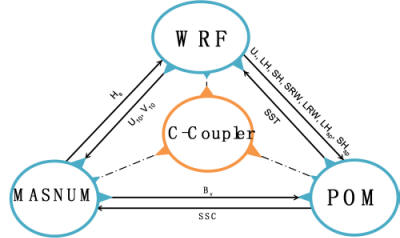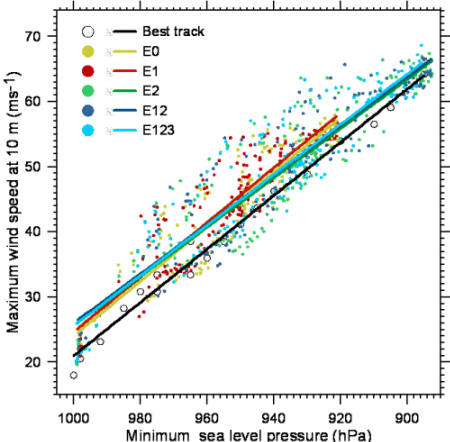|
Recent research on Typhoon simulation achieved a breakthrough to improve the forecast of Typhoon intensity. Although the track forecasts have been remarkably improved in recent years, improving Typhoon intensity simulation and forecast of tropical cyclones was a great challenge for a long period. The lack of skill of intensity forecasts may be due to insufficient consideration of the physical processes at the air-sea interface, and of those involving thermal exchanges in particular. Recently, the model development team of First Institute of Oceanography, SOA, China, developed a full Atmosphere-Ocean-Wave coupled model (called FIO-AOW) to solve this problem. Biao Zhao and other members had cooperated with Italian senior scientists to explore the sensitivity of Typhoon simulation using FIO-AOW. Three key air-sea physical processes associate with surface wave had been considered, including sea spray produced by wave breaking, non-breaking wave-induced vertical mixing and rain. They found that both of surface wave and rain are very important for typhoon modeling, the typhoon intensity forecasting skills could be significantly improved after considering these air-sea physical processes. These understandings are potentially helpful for improving intensity simulation and forecast. Their results were published in the Journal of Geophysical Research: Oceans. Full text of this article can be found: (http://onlinelibrary.wiley.com/doi/10.1002/2016JC012262/full)  Figure 1. A sketch of the FIO-AOW, as well as the coupling parameter exchanged between each of the components  Figure 2. The evolution of typhoon Haiyan. Time series of (a) the minimum sea level pressure, (b) the maximum 10 m wind speed  Figure 3. Observed and simulated pressure-wind relationship from the best track and numerical experiments with the related linear best-fit lines |
A breakthrough of the forecast ability on Typhoon intensity
Date: 2017-04-21 17:52 Author: admin Clicks:
